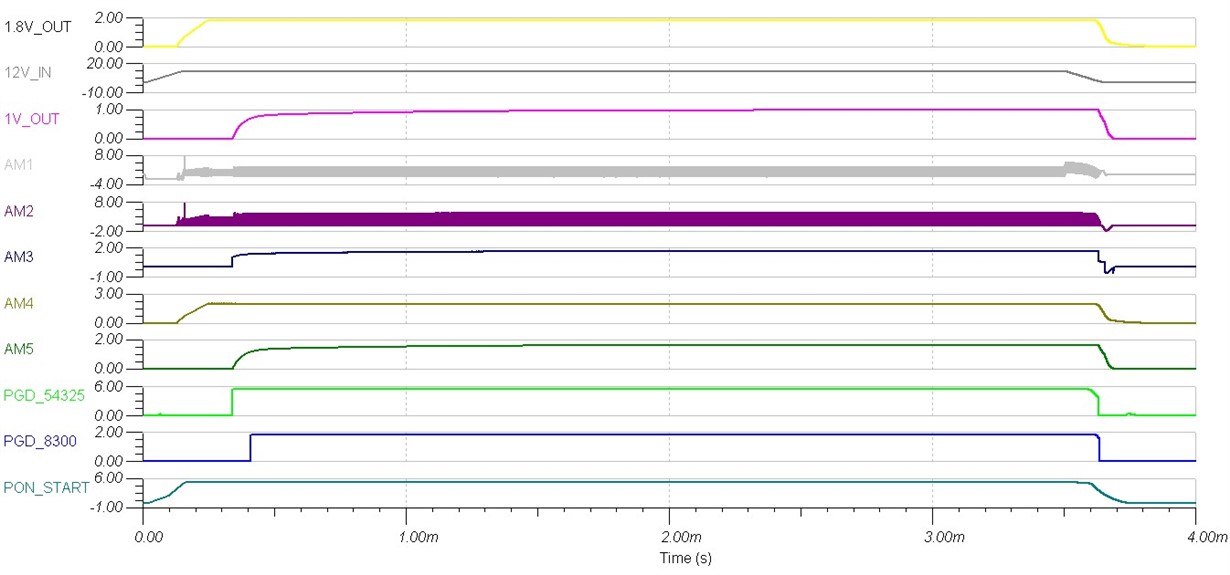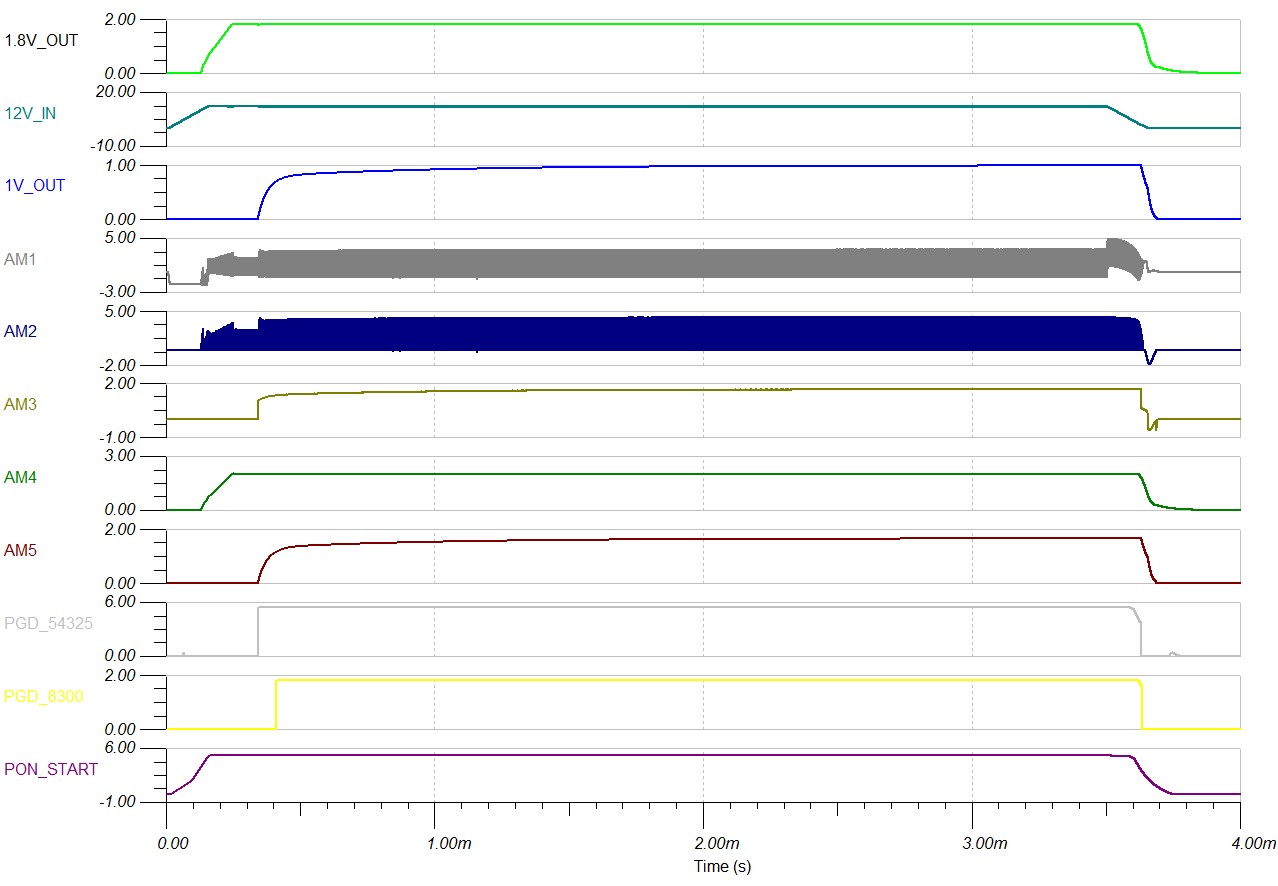Other Parts Discussed in Thread: TINA-TI, TPS7A8300,
Tool/software: TINA-TI or Spice Models
Hi,
Let me talk about the TPS54425 and TPS7A8300 TINA-TI simulation.
Please refer to the attached simulation file.
54425_1.8V_and_8300_1.0V.TSC
I got two questions from customers.
・Does the TINA-TI sim work normally?
Customers are using TPS54425 and TPS7A8300 sim files at the same time.
Therefore, they want to check that it works properly.
・If it is operating properly,
Inrush current was confirmed on simulation waveform.
Customers want to know the cause of this occurrence.
Inrush current is change the location that occurs for every simulation.
Could you give me your advice?
Best Regards,
Yusuke/Japan Disty




